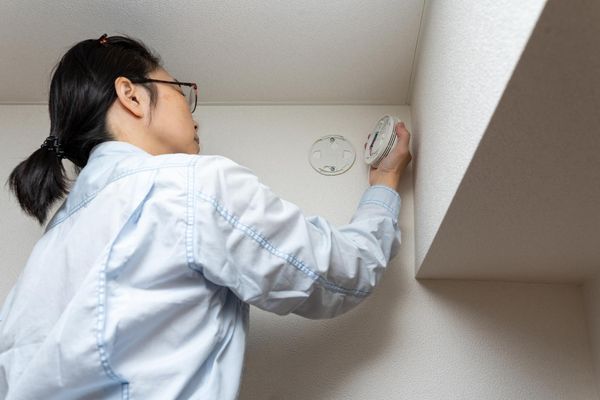Every time I go out in public, I think about germs.
I wash my hands after touching anything whenever possible. I make sure to have hand sanitizer in case there's no sink nearby. I think about germs at the gym, on an airplane, in a public restroom.
I'm not sure if I'm obsessed or just careful.
But it pays to be aware because germs are all around—and it's not just in the obvious places.
Here are some common everyday places germs hide.
1. Cutting Boards
Researchers from the University of Arizona found that the average cutting board has 200 times more fecal bacteria than a toilet seat. All together now … ewwwwww.
Blame raw meat, poultry and seafood. Experts say it's OK to use wood or a nonporous surface for cutting and prepping, but they advise using one strictly dedicated for meat, poultry and seafood to prevent cross-contamination.
You can sanitize both wooden and plastic cutting boards with one tablespoon of unscented, liquid chlorine bleach per gallon of water. Here are some other guidelines for caring for your cutting boards, from the American Academy of Nutrition and Dietetics.
2. Money
Money laundering might be a good idea when it comes to germs (but sadly, paper money doesn't go to the dry cleaners). Scientific American says that bacteria can easily settle into the crevices of paper bills due to its "fibrous nature," and that the longer money stays in circulation the more exposed it is to germs, which can survive for months. And since, according to the Federal Reserve, the average lifetime of a dollar is anywhere from four to 15 years (ones, fives and tens are used more often, so are more likely to be germy), there's a lot of dirty money out there that's been passed through a lot of people's hands. And who knows what those hands have touched?
3. Kitchen Sponge
While it's handy for mopping up messes, its moist, warm environment makes it host to bacteria. And those germs are likely to also be on the kitchen drain and the kitchen sink faucet handles, too.
The U.S. Department of Agriculture suggests washing your sponge in the dishwasher with a heated dry cycle or wetting it, then putting in the microwave for about a minute. While this won't eliminate every source of bacteria, the heat will kill the most dangerous ones.
Surprising fact: The kitchen is more contaminated than the bathroom, particularly the sponge and dishcloth.
Read more about Habits of People Who Don't Get Sick.
4. Restaurant Menus
They pass through a lot of hands, but rarely—if ever—are they washed. Yet cold and flu viruses can live for 18 hours on hard surfaces, according to a study in the Journal of Infectious Diseases. Keep your menu way from your napkin and silverware, lest it contaminate those as well, and once you've decided what you will feast on, it's time to wash your hands.
5. Salt, Pepper and Other Condiments
Those all pass through many hands, too. Even if you've washed your hands, chances are the person before you didn't before seasoning their food (see above). And have you ever seen anyone disinfecting these containers? (The possibility is pretty slim.)
Food for thought: Before you reach for the salt or pepper or ketchup, put a dollop of hand sanitizer on the outside of it or discretely wipe it with a disinfectant cloth.
It turns out the toilet seat is the least of our concerns when it comes to worrying about contamination. Restroom door handles, your cellphone, soap dispensers, grocery carts, doctor's office—germs like to spread their wealth.
And while we can't all go around dressed in a hazmat suit toting wads of disinfectant wipes, it does pay to be on alert and be armed with some subtle destroyers, like hand sanitizer, wipes and the gold old gold standard, soap and water.







